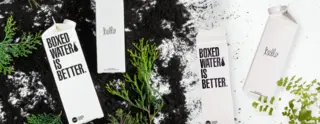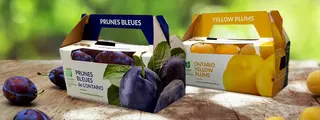
Drink this in: The beverage industry is turning its eye toward paper packaging in greater numbers.
While paper isn’t a new player in the beverage market—think bag-in-box constructions, paper straws and the classic six-pack carrier—its share is expanding because of consumers’ growing preferences for sustainability, personalization and e-commerce.
Millennials and Generation Z are both demanding environmentally-friendly products, and baby boomers increasingly follow their children’s and grandchildren’s lead. According to the Hartman Group, consumers feel strongly that companies should help the environment.
Those results are manifested visibly in paper packaging, whether it’s a product in hand like Boxed Water or boxed wine or paper bottle prototypes from leading beverage businesses like The Coca-Cola Co.
Attention to Detail
As consumers become more educated about sustainability and demand more from brands, they’re paying attention to processes and systems as well. This affects product design directly, through innovations such as refillable products and concentrates, beer in a box, and boxes for bottles and cans that double as coolers because of a special coating that lets them hold ice and water.
Paper-Based Bottles
It also shapes the big picture: Leading global food and beverage producers have set goals to make packaging be recyclable or compostable. Others are joining the global movement against single-use plastics: Bacardi announced its goal to be plastic-free by 2030 by designing new paper-based bottles for its beverages.
While this commitment to principles of the circular economy has the potential to lead to more paper innovations, protecting the product inside remains crucial. These environmentally-friendly developments wouldn’t fly if the boxed beverage leaked.
Paper’s Sustainable Advantage
While paper is versatile, it’s primarily the sustainability advantages that are bringing it into the spotlight. Paper packaging begins and ends with sustainability: It’s made from renewable resources, and it’s consistently one of the world’s most recycled materials.
“Paper is the only option that is truly renewable,” says Robert Koenen, chief marketing officer of Boxed Water. “Trees can be replanted; oil and bauxite are limited resources. Paper is the basis of our entire brand—it’s sustainable, it’s recyclable, and it also allows us to keep our water perfectly pure. We wouldn’t exist if it weren’t for paper. We believe that there is a tidal wave of demand coming from the next generation that is looking to help the planet survive, and paper is a key solution.”
We’ll raise a glass—and a box—to that.



